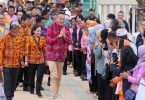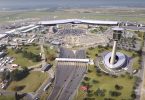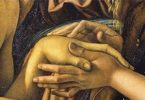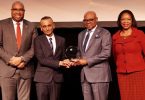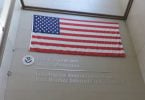In November, 2007, a new chapter in the history of the Valley of the Kings began when the first all-Egyptian team ever to work at the site began excavations under the direction of Dr. Zahi Hawass. Hawass announced today that the team has recently made many important and exciting discoveries, which are revolutionizing our understanding of one of the most mysterious and fascinating places in Egypt. There are still a number of kings and other royals who were probably buried in the Valley of the Kings, but whose tombs have not yet been found. The resting places of Ramesses VIII, Thutmose II, and the queens and princes of the 18th Dynasty are still unknown. Hawass believes that there are still many treasures left to be discovered in the valley.
The Valley of the Kings is one of the richest and most fascinating archaeological sites in the world. It was here that in 1922, Howard Carter found the tomb and treasures of Tutankhamun (KV62), perhaps the most sensational discovery in the history of archaeology. In 2005, a team from the University of Memphis in the United States located the first new tomb found in the valley since Tutankhamun, bringing the number of known tombs to 63, of which 26 belonged to kings. Although explorers and archaeologists have been combing the Valley of the Kings for centuries, not a single tomb has been found to date by an Egyptian. Dr. Hawass and his team hope to change this statistic. They are working in three different areas: between the tombs of Merenptah and Ramesses II on the northern side of the central valley; in the area to the south of the tomb of Tutankhamun; and in the Western Valley, where the tombs of Amenhotep III and Ay are located. Each of these excavations has revealed important information.
In the area in the cliffs between the tombs of Ramesses II and Merenptah, Hawass and his team have found a man-made drainage channel that probably helped prevent the flooding of the royal tombs in the vicinity. Masses of stone piled near a manmade wall at the base of the cliff represent a collection area for runoff from the occasional rains in the high desert that have inundated the Valley of the Kings since ancient times. The area at the base of the channel is probably the location mentioned in an ostracon as the site where a sacred tree once grew, and the “tears of the gods” were collected. A small, sheltered area off to the side of the channel, where the team found a stone basin that may have held food and water, probably served as a resting place for the workmen.
In the central valley to the south of the tomb of Tutankhamun, the team has found the remains of small structures made of stone. These buildings were probably used for storage, perhaps of food and other items intended for offerings or, of embalming materials. The team also also uncovered a number of workmen’s huts, which were identified but never excavated by Howard Carter, and a cave cut into the rock to the south of the tomb. This cave was probably used as a shelter by the workmen. The excavation area is in the vicinity of the Amarna Period tombs KV63 to the southeast and KV55 to the northeast. It is possible that if important figures from this era, such as Nefertiti, for instance, were reburied in the Valley of the Kings after the city of Akhetaten was abandoned, their tombs would be in this area. Hawass’ team is working not only in the area immediately to the south of the tomb of Tutankhamun, but also in the area north and east of the tomb of Seti I. They have found traces of cutting in the bedrock underneath the modern resthouse, which may lead to a previously unknown tomb. Unfortunately, it would be necessary to remove the entire building to explore this area, so they will not be able to do so in the immediate future. A radar survey of the central valley was recently conducted in cooperation with an American team. The radar identified a number of areas of interest, and further analysis of the data may reveal features that warrant archaeological investigation.
Hawass’ team have made a number of remarkable finds. They have found hundreds of graffiti, most of them previously unknown. One unique example tells us that the vizier Userhat built a tomb for his father, the vizier Amonnakht, in the place known as set-maat, or “place of truth.” An inscription mentioning a previously unknown queen, the first part of whose name reads “Weret.” This woman bore the title of “god’s wife,” an important religious office held by royal women beginning in the early 18th Dynasty. A beautiful painted ostracon showing a queen presenting offerings was also discovered, in addition to inscriptions of the cartouches of Ramesses II and Seti I. In addition, the team has discovered pieces of beautiful painted pottery dating to the New Kingdom.
Finally, the team is working in the Western Valley, known in Arabic as the “wadi el-quroud,” or “valley of the monkeys.” The tombs of Amenhotep III and Ay are both located in this area. Queen Tiye, the mother of Akhenaten, was the wife of Amenhotep III and possibly the sister of Ay. If she was buried in the Valley of the Kings, her tomb might have been carved out near that of her husband, and if Ay were in fact her brother, it would be all the more appropriate for her tomb to be near his as well. It will be interesting to see what excavations in this area will reveal. The Valley of the Kings still holds many secrets. Hawass and his team will continue to explore this fascinating site in order to add to our understanding of Egypt’s past.











